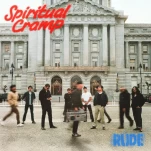Using Absinthe in Cocktails
Before the advent of penicillin and modern pharmaceuticals, alcohol was used as a preservative and base for many bitter herbal medicines, some of which are now sold as cocktail bitters. To make the mixture more palatable, apothecaries and country folk would add sugar, their spirit of choice, and maybe some water.
Depending on whom you talk to, this mixture was defined as a cocktail somewhere around 1803. Absinthe was introduced into this beverage sometime during or before the 1880s, and quickly gained popularity. In the words of Ted Breaux, Jade Liqueur’s absinthe historian and distiller, “absinthe was developed as a medicine. The original purpose of cocktails was making medicinal spirits good to drink, so absinthe really fit right in.”
But in France, absinthe had become a source of competition for the wine industry. There was one other problem: “it had no legal definition,” says Breaux. “Producers weren’t bound by food and beverage safety laws like we are. Back then, you could put anything in a bottle and call it absinthe.” As a result of this oversight and other political and social events, absinthe was banned in most countries.
“Interestingly, it was never banned in some countries,” says Breaux. “In England, of course, it was never really a problem because it was primarily used in cocktails.” Outside of England, bartenders and producers alike got creative to find a viable substitute for making cocktails. Thus, Herbsaint and the anise liqueurs known as pastis were born.
-

-

-

-

-

-

-

-

-

-

-

-

-

-

-

-

-

-

-

-

-

-

-

-

-

-

-

-

-

-

-

-

-

-

-

-

-

-

-

-








































